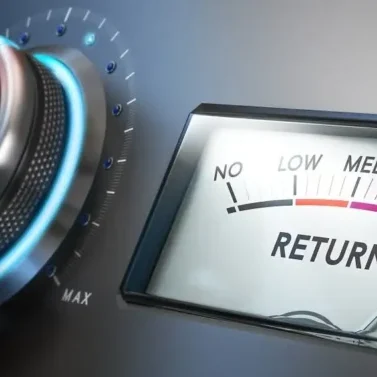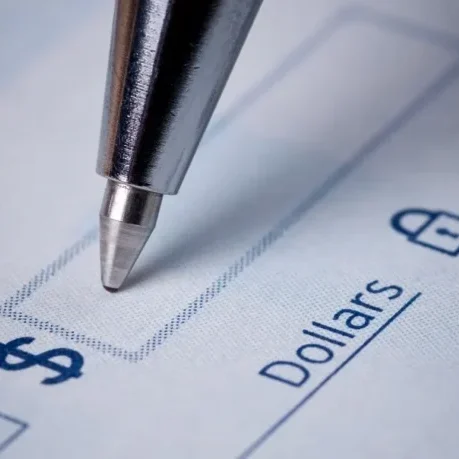How to Finance a Delivery Route Acquisition
Route delivery businesses are very popular among entrepreneurs. However, getting financing to purchase this type of a business can be challenging due to several reasons. In this article, you will learn:
- What lenders are looking for
- Financing alternatives
- Why a down payment is needed
- Common financing structure
This information applies to individuals or companies buying most types of delivery route businesses. Examples include:
- FedEx routes
- Bread routes
- Cookie routes
- Snack routes
- Soft drink routes
- Pool routes
1. How do lenders examine a delivery route business?
Lenders don't like to finance ideas, dreams, or concepts. Those are too risky for them. Instead, lenders prefer to finance companies with three traits: good collateral, solid cash flow, and low risk.
Your lender will likely review your proposed acquisition to determine if it has these traits. This point is important. Focusing on these items when you present the opportunity will improve your chances of getting funded.
Lenders examine if the business fits these criteria by asking the following four questions:
a) Are you buying the whole business or just some routes?
The lender first considers whether you are buying a whole business or just some routes. It's easier to finance the acquisition of the entire route delivery business. Why? Because the lender can review income and expenses to determine if the business is profitable. Thus, you can easily evaluate risk, revenues, and cash flow.
On the other hand, buying just some routes from a seller is difficult. You need to know how much income these individual routes provide. And you can get this information only if the seller has been recording their income by route beforehand.
But it gets more complicated.
You also need to know the expenses associated with the routes you are buying. Few sellers classify expenses by route. Even when they do, some expenses are hard to break out. These types of expenses apply to the operation of all routes (e.g., office rentals, phones, managers).
Without accurate expense information, how do you (and lenders) know if the route is profitable? Buying just some routes increases risk and decreases chances of success. Fortunately, there are some ways to get around this. They do require a lot of work.
b) Does the business have collateral?
The collateral of a delivery business is concentrated in its trucks and vans. This type of collateral is referred to as "equipment." Some large delivery companies may also have some real estate and other assets, but that is unusual.
Sellers can own their equipment, lease it, or rent it. How the seller holds their equipment is crucial. It can determine the success or failure of the transaction.
The simplest scenario is when the seller owns their delivery trucks and vans. In this case, the equipment is collateral that has value and can be easily appraised.
Things get more complicated if the seller uses an operating lease, or if they rent the equipment. In that case, they don't really own the collateral. While transactions with leased/rented equipment can be difficult, they are not impossible. There are some ways to structure the opportunity in a way that gets funded.
c) Valuing the collateral
As part of its due diligence, the lender appraises all the sellers' collateral. This appraisal is often a point of contention between the lender and the other parties.
The seller wants to value their equipment and collateral at current market price. This approach sounds reasonable, doesn't it? That is how private individuals operate every day.
Unfortunately, this is not how lenders operate.
Lenders are conservative and know that equipment may not be easy to sell. They want to lower their risk. As a result, they prefer to use a valuation method called the "Orderly Liquidation Value" (OLV).
In the OLV model, the equipment is assumed to be sold "as is where is" in a "reasonable time frame." It is not a perfect sale – rather, it is a realistic one. This model provides for a valuation that is somewhat below market value (varies).
Some lenders (usually non-SBA) use the "Forced Liquidation Value." As the name implies, this approach assumes equipment is sold in a forced sale. As you can expect, this scenario results in a valuation that is much lower than market value.
d) Is the collateral clear?
Few delivery route companies pay for their equipment in full when they buy it. Instead, they get a loan to buy the equipment.
When you get financing to buy equipment, the lending company encumbers the collateral through a lien. This process means that if the equipment is sold, the lending company must be paid in full before transferring the title.
When you buy the company, the seller's lenders must be paid in full so you can get title to all the equipment.
e) Do you have the right experience?
The next item lenders look at is at your experience in this type of a business. Lenders finance transactions in which they are certain that the buyer knows how to run the business. This certainty reduces their risk considerably.
So, what happens if you don't have the right experience? There is one way to solve this problem. You need to hire one of the managers of the business you are buying. They must be hired on an extended contract. This action assures the lender that someone who knows the business is there.
f) Is the business profitable?
Lastly, lenders look at the profitability trends of the business you are buying. Are revenues and profits increasing, staying the same, or decreasing? And, if they are decreasing, why?
The same holds true for cash flow and other important financial metrics.
Lenders examine these metrics to determine if you are buying a good business. The ideal scenario – for both you and the lender – is to have your financing paid from the cash flow that the business generates. This arrangement ensures that the company has the funds to support all debt payments comfortably.
2. What financing options do you have?
Realistically, distribution route buyers have only a few financing options. These transactions are not the easiest to finance. Furthermore, lenders prefer to focus on larger deals.
However, there are options that work very well for most transactions.
a) SBA-backed loans
The Small Business Administration (SBA) has loan programs that can be used to finance these types of transactions. Note that the SBA itself does not provide loans. Instead, it provides guarantees to lenders. In turn, these lenders offer affordable loans to small businesses.
SBA-backed loans are accessible to small business owners – even those owners who don't have stellar credit or assets. The purpose of the SBA is to help these individuals.
Keep in mind that getting a business acquisition loan still requires a lot of work. Lenders still perform their underwriting and have qualification requirements.
Not every SBA lender is comfortable financing these kinds of transactions. Each lender has its areas of expertise. Be prepared to speak to a few lenders until you find the right one.
b) Seller financing
A second alternative is seller financing. In this case, the seller creates a loan that you pay over a period of time. One advantage of seller financing is that it keeps the seller connected to the performance of the business because the seller's payments usually depend on it.
You can often get seller financing at attractive rates. However, sellers seldom finance the whole purchase. They want you to find other sources and to commit your own funds. Instead, they may finance 20% to 60% of the value. Lower values are more common.
c) Equipment financing
Another option is equipment financing. You can use this method to finance the purchase of vans, trucks, and trailers. In an acquisition, this type of financing may be used in combination with another type of financing.
d) Asset-based lending
Lastly, asset-based lending can be used to finance some transactions. Asset-based loans allow you to finance different asset classes in a single package. This financing can include equipment, real estate, accounts receivable, and so on. These loans are used in very specific opportunities.
3. You must invest some of your own funds
Invariably, buyers want to acquire businesses without investing any of their own money. We can understand this desire. However, it is unrealistic. Learn more by reading "Can I buy a business with no money down?" Finance companies usually require buyers to commit some of their own funds to the transaction. This requirement keeps the buyer committed to working the business if things get tough.
Generally, buyers need to invest 10% of the purchase price in the transaction. Learn more about getting funds for the down payment and the cost of buying a company.
4. How to structure the acquisition?
There are many ways to structure an acquisition. However, the majority of transactions use a combination of these three options:
- Down payment of 5% to 10% (larger is better)
- Seller financing
- SBA-backed loan
Need to finance a delivery route acquisition?
The first step to work with us is to submit this form. Once we review it, one of our associates will contact you to discuss the specific details of your acquisition.







